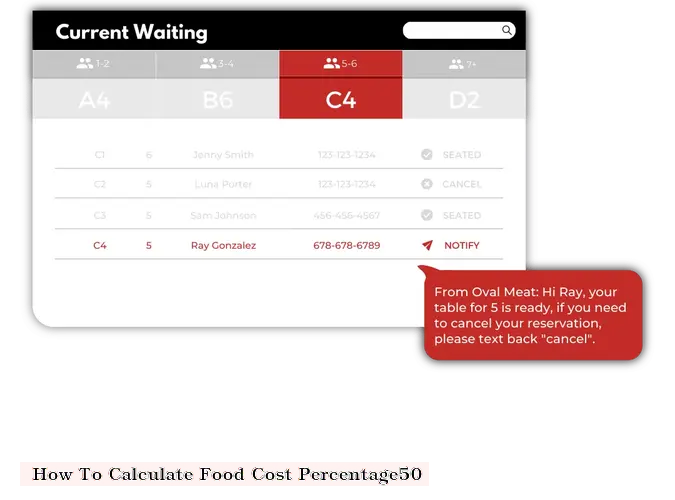

Food cost percentage is a key metric that measures the percentage of total food costs compared to the total revenue of a restaurant. It's a crucial KPI (key performance indicator) for restaurant owners and managers, as it helps them understand the profitability of their business and make informed decisions about pricing, inventory management, and menu engineering.
To calculate food cost percentage, follow these steps:
1. Determine the cost of goods sold (COGS): This includes the cost of all ingredients, raw materials, and any other costs directly related to producing the food. This does not include labor costs, overhead, or other indirect expenses.
2. Calculate total revenue: This includes all sales and revenue generated by the restaurant, including food, drinks, and any other revenue streams.
3. Calculate the food cost percentage: Divide the COGS by total revenue and multiply by 100.
Formula: Food Cost Percentage = (COGS ÷ Total Revenue) x 100
For example, if a restaurant has a COGS of $10,000 and total revenue of $50,000, the food cost percentage would be 20% ($10,000 ÷ $50,000 x 100).
This percentage can vary depending on the type of restaurant, its location, and the menu offerings. As a general rule, a lower food cost percentage indicates higher profitability, while a higher percentage indicates a greater cost of goods sold relative to revenue.
To keep food costs under control and maintain a healthy profit margin, restaurants can implement various strategies, such as:
1. Menu engineering: Analyzing menu items' profitability and adjusting menu prices or offerings to optimize revenue and profitability.
2. Inventory management: Implementing effective inventory management systems and processes to prevent waste, reduce costs, and ensure sufficient stock levels.
3. Sourcing and procurement: Building relationships with reliable suppliers, negotiating better prices, and exploring alternative sources for ingredients to reduce costs.
4. Recipe engineering: Optimizing recipes to reduce ingredient costs without sacrificing quality or taste.
5. Portion control: Training staff to maintain consistent portion sizes to minimize waste and optimize ingredient usage.
6. Profitability analysis: Regularly analyzing the profitability of each menu item and adjusting menu prices or offerings to optimize revenue and profitability.
By controlling food costs, restaurants can increase their profitability and ensure long-term success. Remember, monitoring food cost percentage is an ongoing process that requires regular evaluations and adjustments to maintain a healthy profit margin.
DISCLAIMER: This information is provided for general informational purposes only, and publication does not constitute an endorsement. Kwick365 does not warrant the accuracy or completeness of any information, text, graphics, links, or other items contained within this content. Kwick365 does not guarantee you will achieve any specific results if you follow any advice herein. It may be advisable for you to consult with a professional such as a lawyer, accountant, or business advisor for advice specific to your situation.

today
Copyright © 2025 Kwick365.com
Designed by KwickPOS is the best restaurant POS